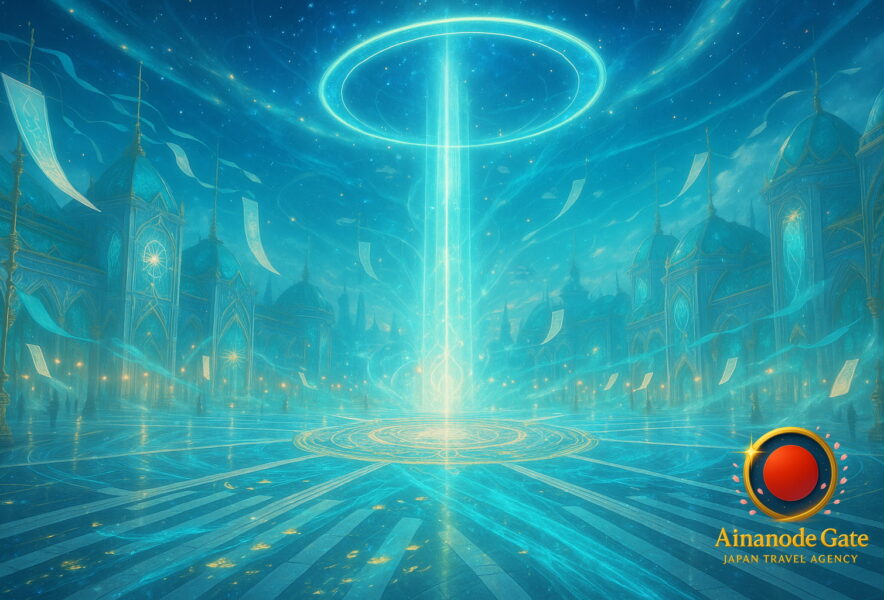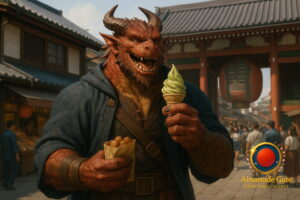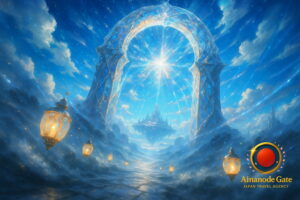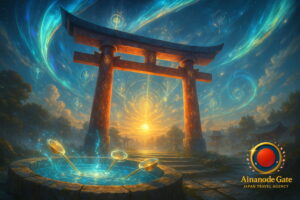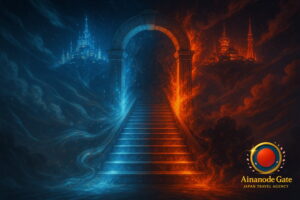Introduction – Where a Crosswalk Became a Stage
Shibuya Scramble Crossing isn’t just where roads meet—it’s where stories collide. Each time the signal turns green, a river of people surges from every corner, merging into a single, swirling mass and then thinning back into separate streams. If you stand on the curb and watch a full cycle, you can sense why travelers treat this as a rite of passage: it captures Tokyo’s tempo in forty-odd seconds.
By the numbers, Shibuya is staggering. Various surveys and redevelopment reports place typical weekday pedestrian totals around the hundreds of thousands, with peaks approaching half a million in a single day. During a single green phase, crowds can swell into the low thousands—just enough to turn the asphalt into a living mosaic of footsteps and near-misses. Yet collisions are rare. People naturally tilt, pivot, and thread the needle; strangers anticipate each other without a word. That quiet choreography is deeply Japanese—efficient, cooperative, and oddly soothing to witness.
First-time visitors often expect chaos. What they get is order at speed. The trick is to walk with the flow: look up, move decisively, and trust that the human current will part around you. If you hesitate in the middle, you’ll feel the city’s pulse catch for a second—then resume as if nothing happened. It’s thrilling to be both an actor and an audience member in the same scene.

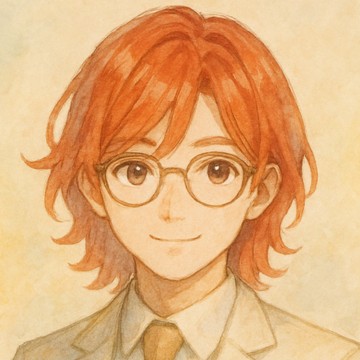
History & Culture – From a Local Junction to a Global Icon
In the 1970s and 80s, Shibuya transformed from a convenient station area into a youth-culture engine. Department stores multiplied, small streets turned into shopping corridors, and music, fashion, and nightlife became the district’s grammar. The all-direction crossing matched that evolution: it prioritized pedestrians and retail over cars, funneling foot traffic into a central plaza that felt kinetic even between light changes.
Global fame arrived through screens. Films, commercials, and music videos made Shibuya’s crossing shorthand for “Tokyo.” It’s the visual equivalent of a cymbal crash—cut to those white stripes and neon billboards, and viewers instantly know where they are. Directors love the intersection because it delivers scale without CGI: just start rolling when the signal changes and let the city perform.
Many productions don’t film at the real crossing at all. They use the Ashikaga Scramble City Studio in Tochigi—a full-scale outdoor set modeled on Shibuya’s intersection. It looks authentic, it’s easier to control, and no one has to pause the entire neighborhood just to get a shot.
There’s also a cultural split worth noting. For visitors, Shibuya is spectacle—proof that Tokyo never slows down. For locals, this is simply a passageway between trains, offices, and shops. That gap between “destination” and “shortcut” is exactly what makes the crossing so fascinating: it’s both ordinary and legendary at the same time.


Experience Points – Cross, Watch, and Capture
1) Cross with the Flow
Crossing is the simplest “Shibuya experience,” and also the most honest. Stand at the curb of any arm of the intersection. When the light turns green for pedestrians in all directions, enter with confidence and keep moving. If you want that center-of-the-cross shot, plan it before the signal changes; pausing midstream can back up the human traffic and irk locals who are late for a train.
2) Watch from a Vantage Point
Seeing the pattern from above is a different thrill—like observing an urban heartbeat. Some of the most popular vantage points are directly tied to the station-side complexes. One rooftop observatory elevates the scene into a panorama, where the zebra stripes look like brushstrokes and each pedestrian becomes a moving pixel. With a zoom lens, you can catch the exact moment when five streams meet and recombine.
- Observation deck (rooftop panorama): a high-altitude view that turns the crossing into a living diagram of the city.
- Café windows facing the intersection: a front-row seat to the choreography, best for time-lapses and people-watching.
- Low-angle corners at street level: dramatic foreground lines with billboards towering in the background.
3) Photograph Like a Local
Time is your limiting factor. The green phase feels short—and that’s by design. Frame first, then step in. Shoot in burst mode if you’re on a phone, and if you’re using a camera, consider a slightly higher shutter speed to freeze the density without losing the story. Don’t linger in the middle; one cycle is enough to get multiple angles if you plan ahead. For video, a five- to ten-second clip per cycle will usually capture the crescendo.
From a Japanese point of view, blocking the stream for an extended selfie reads as inconsiderate. Locals are not hostile—they’re just trying to make a transfer or grab lunch before a meeting. Blend in by moving with purpose, stepping aside to the curb if you need to recompose, and keeping bags close so you don’t snag passersby.


Tips for Travelers – Timing, Meetups, Nearby Spots
1) Pick the Right Hour
Morning (7–9 a.m.) feels surgical—streams move fast and ignore cameras. Midday offers forgiving light and a steady rhythm. Evening adds neon drama and reflections after rain. After midnight, the intersection can feel like a stage after the curtain falls: eerily empty, the stripes glowing against a quiet city.
2) Meet Like a Local
Tourists naturally choose the Hachikō statue, which makes it crowded. Locals often arrange to meet at the Moyai statue on the station’s southwest side or at specific exits (“in front of B6,” “by the East Exit taxi stand”). These spots are still central but easier to navigate. If you must use Hachikō, message a precise landmark—“left of the statue, facing the station wall”—so your group doesn’t spend 15 minutes waving at strangers.
3) Walkable Add-Ons
– Shibuya Center-gai: a tangle of snack bars, sneaker shops, and game arcades.
– SHIBUYA109: fast-turnover fashion and trend-spotting for teens and twenty-somethings.
– Hachikō Memorial: forever photogenic, forever busy—arrive early morning for clear frames.
4) Crowd Alerts & Seasonal Reality
Halloween and New Year’s Eve push Shibuya beyond its normal limits. To keep the area safe, Shibuya City enforces a ban on public drinking from 6 p.m. to 5 a.m. around the station, along with requests not to congregate in streets or non-designated areas. Extra police patrols and traffic controls are also introduced. While the atmosphere can be spectacular, both the city and locals recommend avoiding Shibuya during these peak nights if your goal is relaxed sightseeing.


World Fragment – “Intersecting Phantoms”
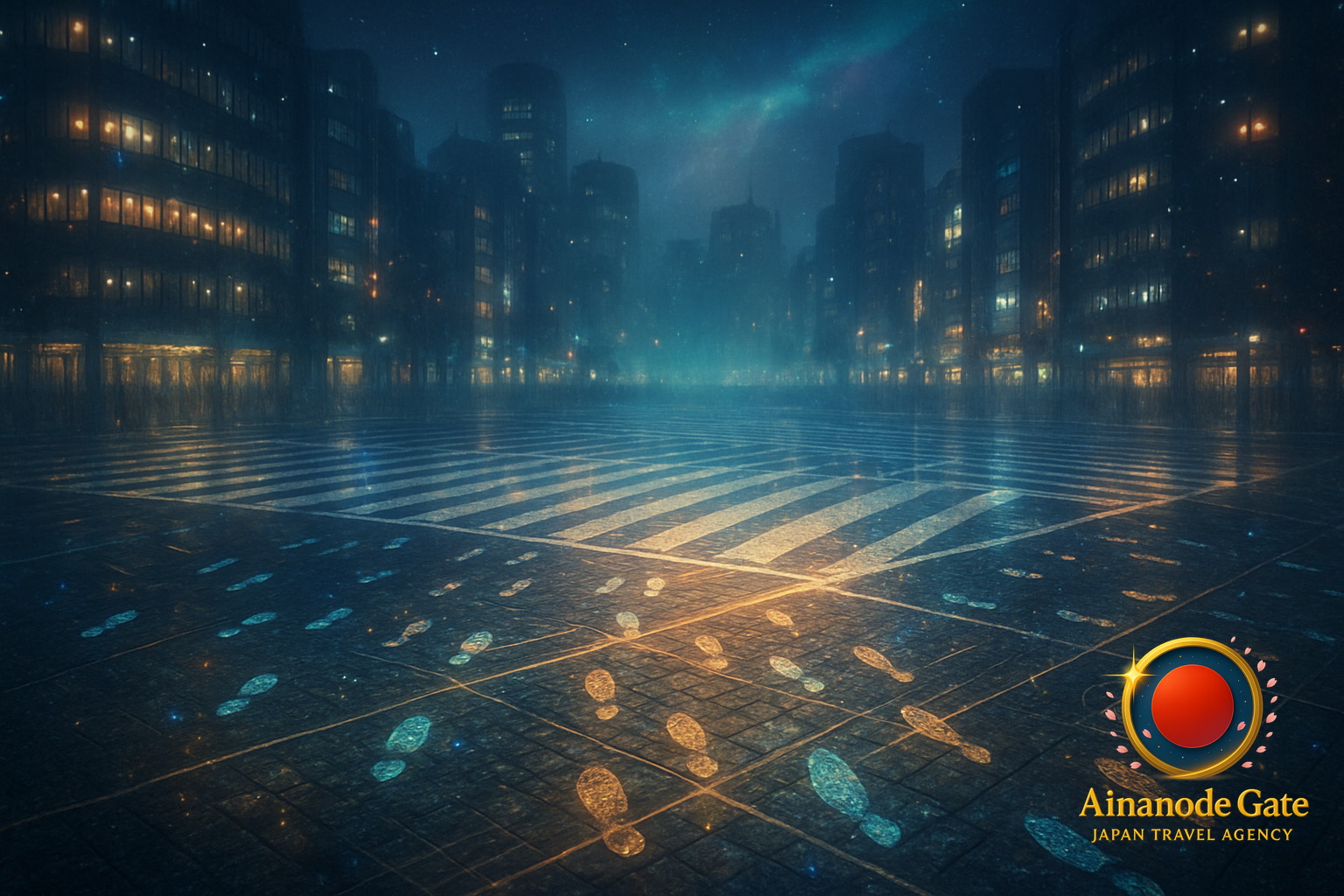
If you stand still—not in the flow but just beyond it—you can hear the crossing breathe. Billboards flicker, shoes scuff, umbrellas tap on wet paint. Time feels elastic: each cycle is the same, yet never repeated. Travelers feel it as awe; locals feel it as momentum. The magic is that both are true.


Summary – A Place Built for Passing Through, Now a Goal
Shibuya Scramble Crossing embodies a paradox. To travelers, it’s a world-class attraction: kinetic, photogenic, and unmistakably Tokyo. To residents, it’s a fast corridor between here and there—a place to keep your pace and make your train. Numbers deliver the wow; everyday use delivers the truth. Tokyo didn’t intend to build a landmark—it created an efficient pedestrian engine. The world arrived, pointed cameras, and crowned it an icon.
Hold both ideas at once and the crossing makes perfect sense. Respect the flow, observe from above, plan your shot, and meet where locals meet. You’ll see why this ordinary intersection became a shared destination for millions.
Closing thought: A space designed for transit has become a finish line on countless itineraries—a reminder that, sometimes, the most memorable goal is simply getting across.

